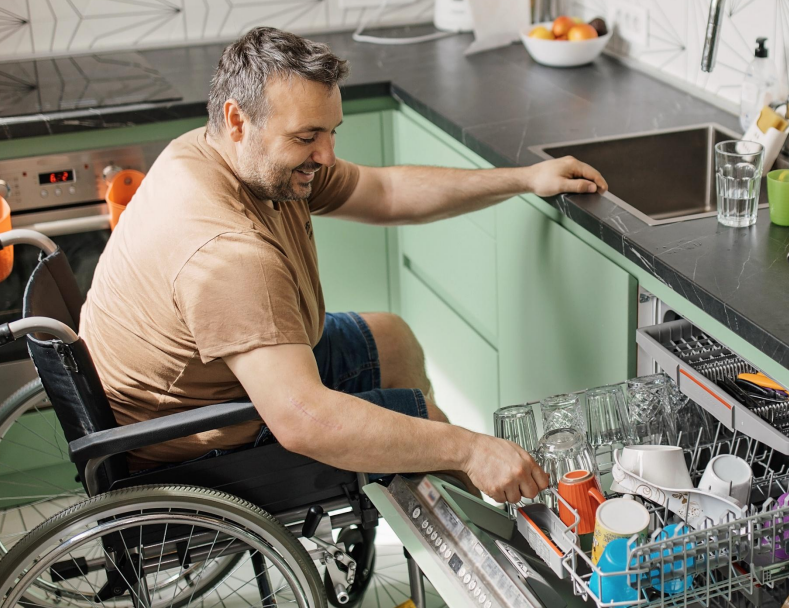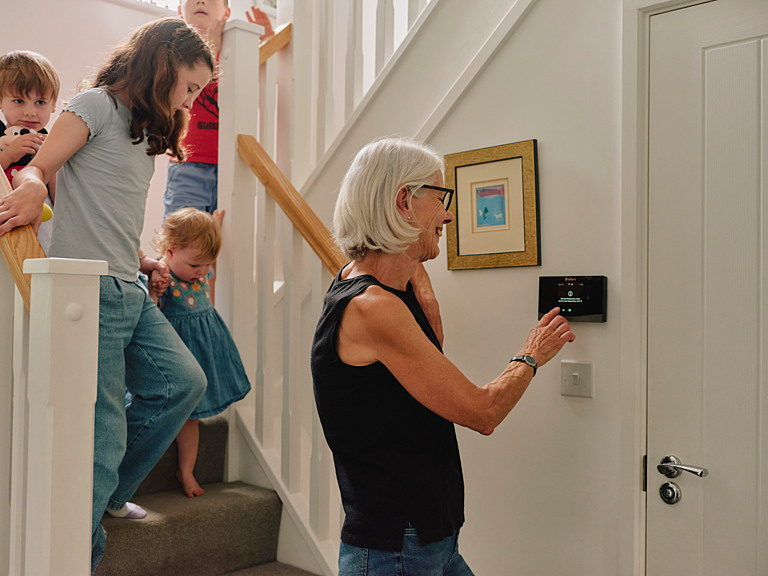Better retrofit services for Disabled people
The Centre for Sustainable Energy (CSE) has authored a report, Energy and Disability: Improving home retrofit for Disabled people and caregivers, that seeks to ensure that the needs of Disabled people are fully integrated into the practice of the retrofit sector.
It was researched and written in collaboration with Disability Advocate Emma Geen.
CSE’s Harriet Sansom explains why the report was badly needed. “Through a combination of low income and high energy costs, many Disabled people are at risk of fuel poverty.
“Disabled people have fewer employment opportunities and therefore suffer lower wages. At the same time they often have a greater need for energy. This can be from being at home more, or because they require additional heating. They may also have the costs of running assistive-powered equipment (for example an electric wheelchair), or from the refrigerated storage of medicine.
“So for both Disabled people and their carers, access to the benefits of the energy transition – prinicipally lower bills and warmer, more comfortable homes – is critical.”
Barriers to engagement
But as the report shows, Disabled people experience a range of barriers that risk excluding them from the energy transition. This includes:
- The challenge of managing the disruption that the installation of low-carbon improvements such as heat pumps or wall insulation cause alongside meeting daily health and wellbeing needs.
- Inability to benefit from electricity tariffs that reward customers who can shift their power consumption easily.
- The exclusion from energy advice, for example through inaccessible websites, and services and information geared to the needs of non-disabled people.
Sadly, there is also a lack of trust in installers and tradespeople generally among Disabled people who all too often have had bad experiences of retrofit schemes which aren’t flexible and sensitive to their needs.
Removing these barriers requires retrofit professionals and energy organisations to take into account Disabled people’s needs and individual circumstances. “Our research shows that there are simple steps that can be taken that would lead to a more positive retrofit experience for everyone – householder, caregiver, installer,” said Harriet. “These are presented in the report as a range of recommendations for retrofit professionals, government, industry bodies and housing providers, to help ensure that Disabled people can benefit equally from the benefits of retrofit.”
CSE also developed a Customer Needs Checklist for retrofit advisors and installers; and a checklist for Disabled people and caregivers to make sure they’re asking the right questions and getting the best outcomes. Both are housed on the Bristol Climate & Nature Partnership website:
Customer needs checklist
Checklist for Disabled households
Find out more
You can download the report from this page.
This work was undertaken as part of the Climate and Disability strand of Bristol Community Climate Action, of which CSE is a partner along with Bristol Energy Network, Sustrans, Praxis and Avon Wildlife Trust.
Related outputs, for example Plain English, Easyread and BSL versions of the report can be found on the Climate and Disability programme page of the Bristol Climate & Nature Partnership website.
If you want to know more about this work, please contact harriet.sansom@cse.org.uk.




